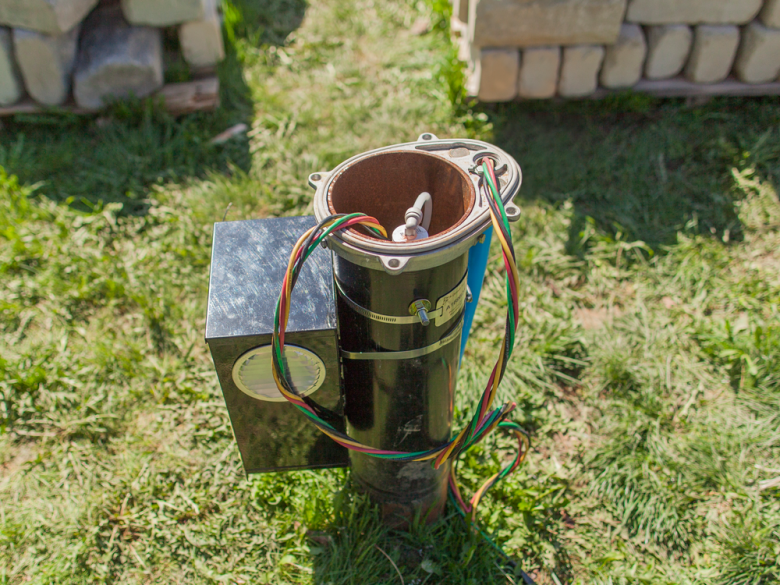WRITTEN BY MIKE HOLMES
The problem with radon is that it’s an invisible, odorless gas. You might not know your home contains dangerous levels of this gas, until it is too late. Long-term exposure to invisible, deadly toxin can increase your risk of lung cancer.
Three things are certain in life: death, taxes, and come November, I’m going to talk about radon. Why? November is Radon Action Month and, for me, that’s my reminder to talk about this deadly toxic gas.
Long term exposure to radon can lead to higher instances of lung cancer. In fact, radon exposure is the leading cause of lung cancer among non-smoking Canadians. And if you are a smoker, it increases your likelihood of contracting this disease.
The problem with radon is that it’s an invisible, odorless gas. You might not know your home contains dangerous levels of this gas, until it is too late and you have a health issue. This is why it’s so important to test your home for radon – and to retest every few years. These tests are inexpensive and could save your life.
This is the best time of year to test for radon, right now. When the weather gets cold, we tend to seal up our homes tight, so any indoor air quality test you perform will have more accurate results.
According to Health Canada’s guidelines, action against radon should be taken when the levels in your home exceed 200 Bq/m3. Know your number and if your radon level is high, here are some of the ways you can mitigate it in your home.
Make Use of your HVAC
To me, this is by far the simplest solution when it comes to radon mitigation. It works in new builds and existing homes, and only requires you have a Heat Recovery Ventilator (HRV). An HRV connects to your existing heating system, and its role is to replace the stale, moist air in your home with fresh air from the outdoors. During this air exchange, most of the heat from the outgoing air is transferred to the incoming air, so you don’t experience a massive temperature shift when the air changes. So where does the radon come in?
Here we use technology to pilot air exchange units (HRVs) to control radon levels and indoor air quality. By attaching a small detection device to your HRV to track the radon levels in your home. If the gauge detects a spike in radon above 150 Bq/m3 (below Health Canada’s guidelines), it causes your HRV to kick in and trigger an air change in your home. This exhausts the old air containing radon, replacing it with fresh air from the outdoors.
Strip It Out of Your Water
It surprised me to learn that groundwater can actually be a source for radon entry. When radon-infused water enters the home, we release the gas into the air every time we wash clothes, shower, flush toilets and run a tap. Drinking the radon-infused water could also lead to higher instances of stomach and other cancers,
Generally, this will only be a concern if your home runs on well water. So even if you had your home tested for radon, was your well tested, too? If so, and it tested high for radon, what’s the solution?
Most mitigation units will treat the water after it gets into your home, but the best way to solve the problem is by tackling it right at the source: the well.
By introducing a steady source of air into the bottom of the well (through an aeration tube), you’re aerating the water as it’s drawn from the bottom of the well and returned to the top. This strips those trapped gases and other groundwater pollutants out of the water – and is completely chemical-free.
Build to Keep it Out
Ultimately, the best way to keep radon at bay is by preventing it from entering the home in the first place. This won’t work for a retrofit, but works great if you’re building from scratch.
Usually when building, you’d place a layer of gravel and then pour your concrete slab. Instead of gravel (which could also be a source of radon), your builder would lay structural sub slab insulation and ventilation panels which allow for continuous ventilation below your concrete slab. When paired with an engineered gas barrier membrane designed to block radon and other toxic gases like methane, it essentially blocks radon from penetrating through your slab. The subfloor system also helps reduce moisture and mold formation.
A continuous and efficient source of ventilation allows any moisture or gasses to harmlessly pass through, without getting into your home and causing havoc.
November is Radon Action Month, and as mentioned above, it’s an ideal time to test for radon. If you’re interested in testing your home for radon gas, please contact me via phone at (780) 718-8400 or email at don@doncholak.com to have your home professional tested with a long-term test (91 days) or to purchase a “Do-It-Yourself Kit.”















